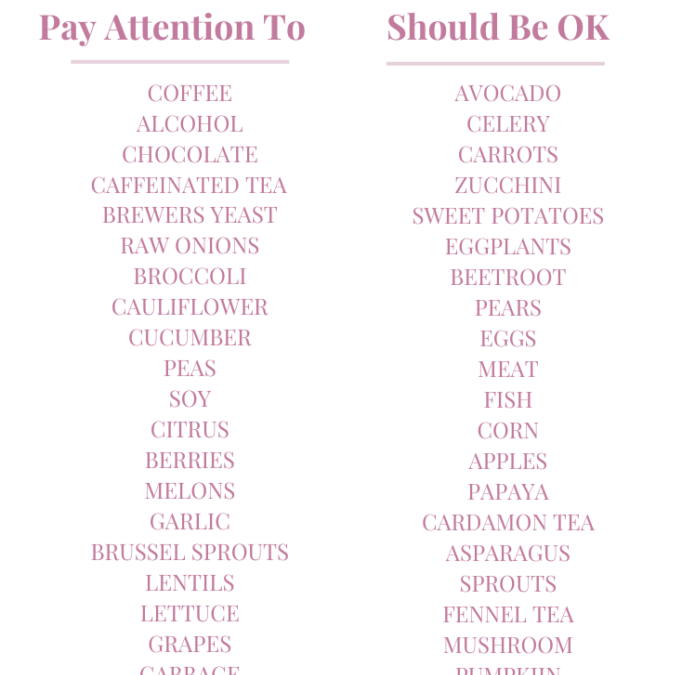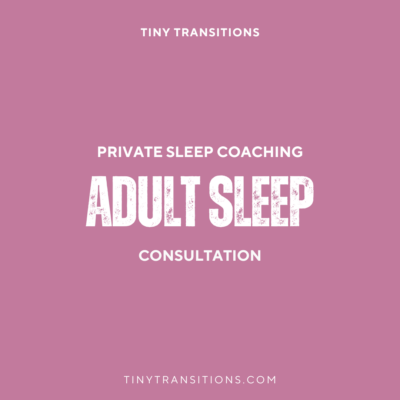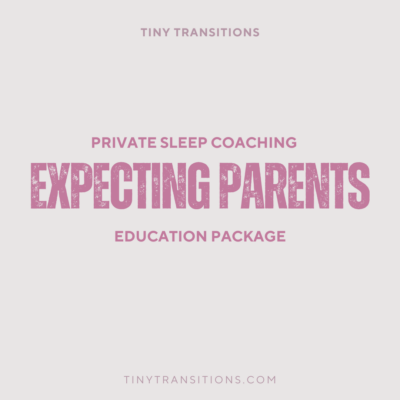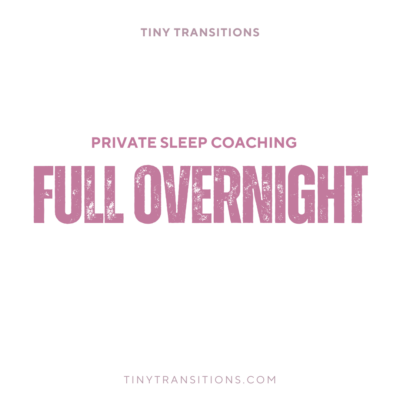With so many different sleep training methods preached about by one parent as a miracle and another as the devil, how do you decide which is best for you? Some are passive, some are aggressive sleep training methods. Some websites tell you only the advantages. Others tell you only the disadvantages. Struggle with sleep no more. Below, you’ll find information on all of the popular kids sleep training methods, including pros and cons.
Bedtime Fading
Bedtime fading is one of the lesser-known sleep training methods, but it can work really well for parents who don’t mind taking a systematic, observation-based approach. The two biggest goals for bedtime fading are to get the child to sleep independently and to unlearn previous poor sleep habits. This method requires a lot of observation, adjustment, and patience, and the time commitment – both during the day and at night – is significantly greater than most other methods.
The Power of Sleep Pressure
Successful bedtime fading revolves around a good understanding of sleep pressure, or the instinctual biological pressure that makes you want to go to sleep. Both babies and adults experience sleep pressure, though it occurs in different amounts and frequencies depending on age. When a person wakes up after a good night’s sleep, their sleep pressure is very low, but it builds slowly over the day. When that person goes to sleep, the sleep pressure starts to decrease until it’s at its lowest point again when the person wakes up.
A lot of babies exhibit “sleep cues” that indicate when sleep pressure is getting really high. Rubbing eyes, laying down, getting silly or cranky – all of these are ways that kids show that their internal sleep pressure is telling them to get some rest. Once they get that rest – whether by a nap or overnight sleep – they are back to their normal, bubbly selves.
Bedtime fading capitalizes on sleep pressure and uses that powerful urge to train a child to go to sleep quickly, deeply, and independently.
How to Implement Bedtime Fading
First, parents need to decide what time they will wake the child up in the morning. This needs to be a consistent wake-up time (even on weekends), so choose wisely. Next, the parents need to set a preferred bedtime based on the child’s recommended sleep hours and wake-up time. For instance, if a child needs 14 hours of sleep and 2 hours of that sleep is naps each day, then the baby needs 12 hours of sleep at night. If the parents want the baby to wake up at 7:00 am, the goal bedtime is 7:00 pm.
To get the child’s preferred bedtime, parents need to monitor their child to see when their baby would go to sleep if left on her own. To get that baseline, parents need to let their child play until she falls asleep independently. Keep in mind, this may mean allowing the baby to stay awake until 10 o’clock or later.
The next day, parents need to keep the baby awake 15 minutes later than that original time and then put her in her bed sleepy but awake. By doing that, the baby’s sleep pressure should be so strong that the baby will go to sleep independently almost immediately. The next night, the parents move the bedtime forward 15 minutes again and monitor the baby’s reaction. If the baby resists, parents keep the bedtime for the same time the next day, but if the baby falls asleep quickly, the parents move the bedtime ahead another 15 minutes the next day. Here’s a sample schedule:
Child’s Preferred Bedtime: 10:15 pm
| Day | Bedtime | Wake-up Time | Notes |
|---|---|---|---|
| 1 | 10:30 pm | 7:00 am | Child falls asleep immediately |
| 2 | 10:15 pm | 7:00 am | Child falls asleep immediately |
| 3 | 10:00 pm | 7:00 am | Child struggles to fall asleep |
| 4 | 10:00 pm | 7:00 am | Child falls asleep immediately |
| 5 | 9:45 pm | 7:00 am | Child struggles to fall asleep |
| 6 | 9:45 pm | 7:00 am | Child struggles to fall asleep |
| 7 | 9:45 pm | 7:00 am | Child falls asleep immediately |
The chart shows how this method requires a lot of trial, error, and observation on the parents’ part. By keeping the child up until the sleep pressure is overwhelming, you’re creating a positive association with sleep and something of a “sleep debt” that will make going to sleep a little easier the next day. It can take quite a while to work down from the child’s preferred bedtime, but the process teaches the child that going to sleep can be a pleasant feeling instead of a struggle.
Don’t Force the Bedtime
If you’re reading about sleep training methods, you have likely fought over bedtime with your child, and one or both of you have shed some tears. With bedtime fading, you’re not trying to force a bedtime – instead, you’re learning what your child needs and moving forward with that information the next day. It can take several weeks to several months of experimentation before getting bedtime where you want it, but there should be very few tears in the process. The important part is that you move slowly and be patient – frustration is the enemy of this sleep training style.
Tips for Success
Bedtime fading is a method entirely separate from the other sleep training practices out there, but it still shares many of the same “tricks of the trade” that make sleep training a successful experience. Some of those tips include:
- Form a Calm Routine: A calm bedtime routine is a crucial factor for successful bedtime fading. This routine should take about 30 minutes right before bedtime (which might mean that you don’t start the process until 9:30 or 10 at night in the beginning), and it should be consistent. Dimming the lights, taking a warm shower, listening to soothing music, reading books together, singing songs, and giving lots of cuddles are all things to include in your bedtime routine.
- Monitor the Stimulation: Kids should be getting a lot of sunshine during the day, so try to spend time outdoors starting first thing in the morning. That will help your baby’s body adjust its circadian rhythm and be better ready to sleep at night. You should also limit screen time and cut it out completely (including movies) at least two hours before bedtime.
- Adjust Diet and Exercise: You should try to cut out or limit foods that are high in sugar and caffeine, and stop strenuous exercise two hours before bedtime. Doing puzzles, playing quiet games, and reading books are good activities to help wind down before bed.
Understand Sleep Needs
It’s important to remember that your child may have different sleep needs from her siblings or other kids her age. She may not need 12 hours of sleep at night, so to accommodate that, she may need to stay up later or get up earlier than you’d prefer.
TL/DR
- Cry Level: Low
- Time Until Independent Sleep: 3 weeks to several months
- Age Range: Starting between four and six months old but effective through toddlerhood
The “Chair Method”
Even though this method sounds like a violent wrestling move, it’s actually one of the gentler sleep training methods out there. With the chair method (also called “shuffling,” “camping out,” or “staying in the room”), parents can stay near their child to keep a close eye and ear on the falling asleep process. The idea is for parents to sit in a chair in the room to help their child fall asleep while providing less and less physical and emotional interaction over a two-week period. Hopefully, that process will help the child learn to self-soothe and teach the child that parents are nearby even if the child can’t necessarily see them.
A typical “Chair Method” training schedule might look something like this:
Days 1-3: A parent sits in a chair directly next to the crib or bed and can occasionally stroke the child’s head, give bum pats, and offer vocal encouragement. The child will likely be crying significant amounts, but parents shouldn’t pick up the child because that tends to “restart the clock” on the sleep process. Instead, small, consistent acts of verbal and physical comfort will eventually help remind the child that he is safe and that parents are nearby. Parents can then leave the room once the child is sound asleep, and they repeat the process any time the child wakes up in the middle of the night.
Days 4-6: Parents move the chair two to four feet closer to the door, still within the baby’s line of sight. Parents should continue to offer physical and emotional comfort, but there should be less since they are further away from the child. Parents can leave the room once the child is sound asleep, and they repeat the process any time the child wakes up in the middle of the night.
Days 7-9: Parents move the chair another two to four feet closer to the door. Ideally, the child is getting used to the idea that the parent is nearby, so there will be less crying, but it still may take a while to get the child to sleep. Parents can leave the room once the child is asleep, and they should repeat the process any time the child wakes up.
Days 10-12: Parents should be out the door or close to it by this point in the sleep training. The child still may be able to see the parent sitting just beyond the doorframe, but they are alone in their room for the most part. The parent can still offer comforting words from outside the room, but there should be little or no physical contact with the child at this point.
How long does this method take?
That’s the rough thing about this method: there isn’t a set time limit for how long you’ll be in the room because you’re in there until the child falls asleep. That means bedtime could last for an hour or more, and each nighttime waking could be the same way. Luckily, if you’re consistent and diligent, those long nights shouldn’t last more than a couple of days. That said, if there are multiple children in the home that need supervision, this method could be very difficult.
How long should you wait before offering help?
In the perfect environment, parents will wait about 10 minutes before offering help during midnight wakings. This gives the child a chance to self-soothe, saving you a lot of time sitting in the room if the child is successful.
What if the baby is still eating during the night?
Barring instructions from your child’s pediatrician, most children do not need nighttime feedings after six months old. That said, if you need to feed your baby, you should try to wait 10 minutes before entering the room and do whatever it takes to keep your baby awake throughout the feeding. The baby should be put down in the crib sleepy but awake, and then you can resume the rest of the process.
TL/DR
- Cry Level: Medium to Medium-High
- Time Until Independent Sleep: 1-2 weeks
- Age Range: Any but particularly well for school-aged children
Cry It Out (CIO)
The Cry It Out (CIO) method is highly controversial among parents and child sleep consultants alike, but it’s generally the fastest sleep training method. In a true Cry It Out method (sometimes called “Unmodified Extinction”), parents leave their child in his bed sleepy but awake, walk out of the room, and return in the morning. That will generally lead to howls of protest (sometimes by both child and parents), but eventually, the child will tucker out and fall asleep. Of course, video monitoring is encouraged (especially if your child is an “emotional crier”), but overall, parents should stay hands-off until the child gets the hang of self-soothing.
The CIO method is controversial because children can get very, very upset when they are left in a bedroom by themselves when they used to be rocked, patted, or sang to sleep. While no parent likes listening to their child cry, the Cry It Out method can teach some valuable sleep skills in perhaps the fastest timeframe of all the sleep training methods.
It’s important to note that if you have changed, fed, and soothed your baby using a consistent bedtime routine (and there are no underlying medical conditions), your child isn’t crying out of pain – he’s crying out of confusion. You used to help him sleep, and now you’re not – that’s a very befuddling concept for a baby’s brain to grasp. Where did you go? Will you come back? What if he needs you?
These fears have led to many people stating that the CIO sleep method can lead to long-term psychological damage, but several studies have found that not to be the case. Babies who are sleep trained using the Cry It Out method are just as well adjusted as babies trained using other, gentler methods.
Most parents don’t start with the Cry It Out method at the top of their list of sleep training methods to try because it can be so difficult, but for some kids, it’s the best way. For other kids, it’s the worst way. If you decide to try it, you should give your baby at least three nights to adjust before switching to another method because any less than three days of new bedtime routines causes more harm than good – especially since the CIO method can be so challenging in the beginning.
TL/DR
- Cry Level: Medium-High to High (or Very High)
- Time Until Independent Sleep: 2-4 nights
- Age Range: Six months to two years (or until in a toddler bed)
Ferber Method
The Ferber sleep method (sometimes called “Ferberization” or “Graduated Extinction”) is a gentler approach than the Cry It Out sleep method, though there can still be quite a bit of crying. The Ferber Method includes aspects of the Cry It Out mentality, but there is one crucial difference: parental involvement.
In the Ferber sleep method, parents put their child to bed sleepy but awake, and then wait outside the door for set, increasing intervals. After each timer goes off, the parents can enter the room and soothe the baby (without picking the baby up), but they have to leave the room after one or two minutes. The parents then set another timer for the increased interval and wait to enter again. Each night of sleep training, the intervals are increased slightly, so eventually, the baby learns how to self-soothe quickly and efficiently. An example schedule might look like this:
| 1st Visit | 2nd Visit | 3rd Visit | 4th Visit | Additional Visits | |
| Day 1 | 2 minutes | 4 minutes | 8 minutes | 10 minutes | 10 minutes |
| Day 2 | 3 minutes | 5 minutes | 10 minutes | 12 minutes | 12 minutes |
| Day 3 | 5 minutes | 10 minutes | 12 minutes | 15 minutes | 15 minutes |
During these interval periods, the baby is mostly crying out of confusion and frustration. “Mom and dad were just here- why did they leave again?” But proponents of this sleep training method stress that allowing parents to check in on their baby reminds the baby that parents are close by, even if the baby gets upset each time the parents leave. Eventually, babies internalize that they can sleep successfully on their own and that parents will be close by if needed.
It’s important to note that the Ferber sleep method is gentler on babies, but it’s also kinder on parents. Being able to check in, touch, and soothe a crying baby brings a lot of comfort to parents who are already struggling with sleep deprivation and frustration, though parents shouldn’t expect it to be a cakewalk. The Ferber method will likely have several days with a lot of crying, but the crying should taper off within a week or so.
TL/DR
- Cry Level: Medium-High to High
- Time Until Independent Sleep: 5-7 nights
- Age Range: Four months to two years (or until in a toddler bed)
Pick Up/Put Down (PU/PD)
The Pick Up/Put Down, or PU/PD, method is one of the gentlest methods out there, so it works well for parents who can’t listen to their baby cry for long periods. PU/PD is also one of the least complicated methods, but it has a limited age range that it helps. Parents who use this method typically have young babies (less than six months old) who are already exhibiting some problematic sleep behaviors.
Parents who use the Pick Up/Put Down method follow the same routine as the other sleep training methods by putting the baby in bed sleepy but awake. The parent can then stay in the room in a chair or leave the room and wait outside until the baby cries. Once the baby cries, the parent picks up the baby and calms him down until he is sleepy but still awake. At that point, the parent puts the baby back in the crib and steps away again. The parent then repeats the process of picking up and putting down the baby until the baby doesn’t cry and falls asleep.
Just as with all other sleep training methods, remember that this style of sleep training doesn’t work for all babies. If a baby is high energy or overly sensitive to stimulation, the constant picking up and putting down can be more upsetting than helpful. Also, babies older than six months might find this method more frustrating than anything else.
Since parents are responding to their baby’s cry almost as soon as it happens, the process is easier to handle from an emotional perspective. However, there is a fairly strong negative: the PU/PD method can take multiple weeks to see any improvement. That said, if you can’t stand crying and you’re patient enough to wait for the results, this might be the training method for you.
TL/DR
- Cry Level: Low
- Time Until Independent Sleep: 2-3 weeks
- Age Range: Less than six months old










